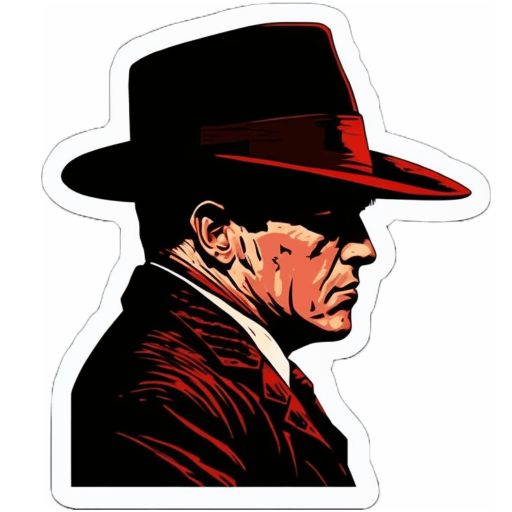The first time Joseph Enea comes to the public’s attention is in September 1962 for the most minor of offenses. But first, let’s get a bit of background on him.
Joseph Frank Enea was born December 16, 1931 to Jack Enea and Jennie Carbone. Jack was a prominent mobster, as well other members of his family. He was a brother-in-law to Andrew DiSalvo, the man who sponsored Frank Balistrieri for Mafia membership.
As far as I know, Joseph Enea had no juvenile record. He was picked up on December 31, 1953 and transported to Watertown for writing bad checks. What came of this is unknown. Probably around this time is when he married Frances LaGalbo, half-sister of mobster/pimp Frank LaGalbo. I have no evidence, but given how close the Enea and LaGalbo families were, I have to wonder if this marriage was arranged.
On November 29, 1955, Jack Enea was murdered and dumped in a ditch in Waukesha County. He was 47. Joseph was 23 years old… and would only make it to 44. The murder is covered in great detail in my book Milwaukee Mafia: Mobsters in the Heartland; while we likely know who did it, the crime is officially unsolved.
Joseph was arrested on September 26, 1957 for battery and was fined $50. He had been tending bar at the Melody Room in the Roosevelt Hotel and got into a scuffle with John Lown. This is the first we know of Joseph associating with Frank Balistrieri, owner of the Melody Room and a friend of the murdered Jack Enea.
Joseph Enea, through attorney Frank Lisheron, filed for bankruptcy on September 11, 1961. He claimed to receive only $100 per week working at Gallagher’s and gave as his debts: Rose Realty ($580 for tavern rental), John Volpe ($975 for tavern rent), Harry Gromacki of H&G Amusement ($1,590 loan) and Harry Kaminsky’s Auto Acceptance Corp ($1865 in judgment). His total debts were given as $8,200 with assets being nothing more than clothing and household goods.
Joseph Enea was interviewed at his home (2510 West Glendale) on December 20, 1961 by Agents Albert Knickrehm and John Holtzman. He said he was a bartender at Gallagher’s and had previously tended bar at Henri’s. Enea claimed to know nothing about Frank Balistrieri, saying he was only a bartender and paid no attention to other people’s business. As far as he was concerned, Balistrieri had done nothing wrong and law enforcement was always “picking on him”. He had heard rumors that Balistrieri ordered the death of his father, but had also heard rumors that others ordered the hit, and did not think Balistrieri was behind it. Enea did say that business at Gallagher’s was slow, and he was considering getting another job because he could not support his wife and kids.
On September 7, 1962, Frank Balistrieri and Joseph Enea were charged with allowing female employees to sit with a male patron at the Downtowner. Also charged were two dancers, Patricia G. Bogg, 33, and Shirley E. Amber, 26. Police Sgt. Jerome Jagmin had stopped in around 1:00am when he saw the dancers sitting with a 52-year old Milwaukee man and a 35-year old Rockford salesman. The Rockford man admitted to buying Bogg peppermint schnapps after watching the floor show.
Attorney James Shellow (at this point a junior partner of Dominic Frinzi) said, “This is a personal vendetta on the part of the police department to destroy Balistrieri’s reputation. This whole thing is tantamount to a frame.” Balistrieri expressed similar sentiments to City Attorney Gerald Kortsch, saying, “You were told to issue warrants. You’re being part of a frame. You’re not the honorable man I thought you were.” The cases were scheduled for October 8 but were not heard until the following spring.
March 28, 1963: Judge Christ Seraphim denied a motion from Frank Balistrieri to move his trial out of the county concerning dancers drinking with bar patrons.
Frank Balistrieri was acquitted by a jury on April 10, 1963 of allowing female dancers to sit on the laps of male patrons at the Downtowner. Also acquitted were bartender Joseph Enea and two dancers. Balistrieri was represented by James Shellow and the judge was Christ Seraphim. Allegedly, Seraphim tipped the case in Balistrieri’s favor by not granting the prosecution time to get a witness from Illinois. The jury deliberated two hours. Prosecutor Maurice Markey also alleged he was threatened twice during the trial. Once by a spectator (name redacted) who said, “You won’t be around to see the end of this case.” And once from attorney Dominic Frinzi, who said, “There are a lot of dead doctors and a lot of dead lawyers and you know where…” (I don’t understand this second one, how it cuts off like that.) DA William McCauley declined to investigate these threats, believing that at no point was Markey in any real danger. A police inspector questioned a dozen courtroom spectators, and none had heard either remark.
Soon after this, Joseph Enea would open Joe’s Spaghetti House with mob flunky Walter Brocca. But that’s another story.
